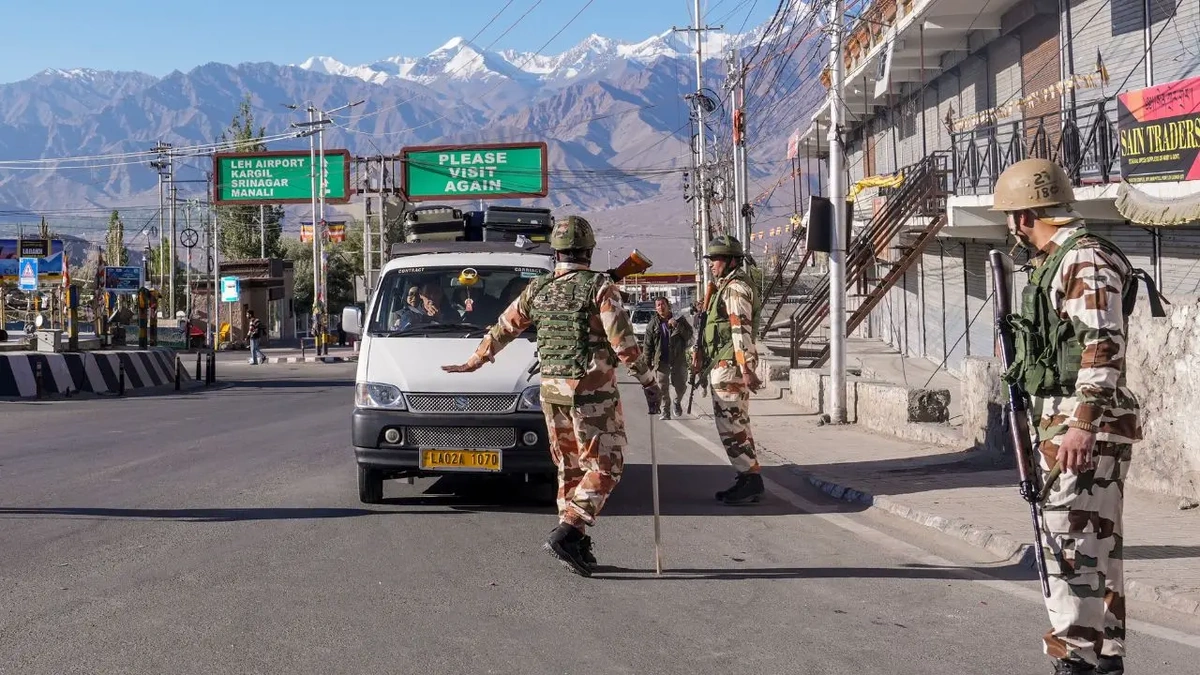SC Addresses Leh Unrest: Notice Issued Regarding Sonam Wangchuk Detention
The Supreme Court’s recent involvement in the Leh situation , specifically the detention of Sonam Wangchuk , has sent ripples across the region and beyond. But, here’s the thing – this isn’t just about one activist or one court hearing. This is about a larger, simmering discontent in Leh, Ladakh, and understanding the ‘why’ behind it all is crucial. Let’s dive deeper.
Why Leh Is Unsettled | A Deeper Look

Leh’s unrest isn’t a sudden eruption; it’s a culmination of long-standing issues. The creation of Ladakh as a Union Territory (UT) in 2019, carved out from Jammu and Kashmir, was initially met with cheers. People hoped for greater autonomy and development. But, as often happens, expectations clashed with reality. What fascinates me is how quickly that initial optimism turned into disillusionment. A key issue is the perceived lack of adequate representation and decision-making power for the local population. Promises of protecting Ladakh’s unique cultural and environmental heritage feel hollow to many when they see developmental projects steamrolling through without proper consultation. It’s like being given a shiny new toy, only to realize you don’t have the instructions to play with it.
Another factor fueling the discontent is the fear of losing control over land and resources. The influx of outsiders, concerns about job opportunities, and the potential dilution of Ladakh’s distinct identity are all contributing to the unease. These are legitimate anxieties and ignoring them won’t make them disappear. Let’s be honest, these are the kinds of issues that can easily escalate if not addressed with sensitivity and genuine engagement.
Sonam Wangchuk: Voice of Dissent
Sonam Wangchuk ‘s detention isn’t just a random event; it’s symbolic. He’s become a prominent voice, articulating the concerns of many Ladakhi people. He has been advocating for environmental protection and greater local control over resources, and his detention is seen by some as an attempt to stifle dissent. But, let me rephrase that for clarity – it’s not just about dissent. It’s about the very real fears of a community watching its way of life change, and not necessarily for the better. The Supreme Court taking cognizance of his detention highlights the seriousness of the situation. The court’s notice is a signal that these issues can’t be swept under the rug. It demands accountability and transparency, which, frankly, is what the people of Ladakh deserve.
The Supreme Court’s Intervention | What It Means
The SC addressing the issue is significant for several reasons. First, it brings national attention to the grievances of the people of Ladakh. Second, it puts pressure on the government to respond effectively and fairly. Third, it offers a glimmer of hope that their voices will be heard. According to reports, the court has asked for details regarding the circumstances of Wangchuk’s detention and the restrictions, if any, imposed on him. This proactive approach from the judiciary is crucial. It’s a reminder that even in remote corners of the country, the rule of law must prevail. And, well, I think that is a big deal.
The court’s notice comes after widespread protests and concerns raised by various groups about the situation in Ladakh. This shows that collective action and peaceful expression of concerns can actually make a difference. It’s not always easy to stand up and speak out, but when people do, it can grab the attention of even the highest authorities. The government now has a responsibility to address the root causes of the unrest and ensure that the rights and concerns of the Ladakhi people are protected.
Looking Ahead | A Path to Resolution
So, where do we go from here? A sustainable resolution requires open dialogue, genuine consultation, and a commitment to addressing the underlying issues. The government needs to engage with local communities, listen to their concerns, and involve them in decision-making processes. Economic development should be balanced with environmental protection and cultural preservation. Finding that balance is tricky, but it’s not impossible. A common mistake I see is underestimating the importance of cultural sensitivity. Ladakh has a unique identity, and policies should respect and protect it. This includes preserving traditional livelihoods, promoting local languages, and safeguarding cultural heritage. The path forward requires a collaborative approach, with all stakeholders working together to build a more inclusive and sustainable future for Ladakh. This also includes addressing concerns about land rights and ensuring that local communities have a say in how their land is used. Check out Aadhar Update to know about government schemes.
The Environmental Angle: Ladakh’s Fragile Ecosystem
Let’s talk about the elephant in the room – the environment. Ladakh is a high-altitude desert with a fragile ecosystem. Unplanned development can have devastating consequences, leading to water scarcity, pollution, and loss of biodiversity. As Wikipedia notes, the region is highly susceptible to climate change impacts. What fascinates me is the interconnectedness of everything. The glaciers are melting, water sources are drying up, and traditional farming practices are under threat. Ignoring these environmental concerns is not just shortsighted; it’s a recipe for disaster. The Ladakhi people have a deep connection to their land, and they understand the importance of protecting it. Their traditional knowledge and practices can offer valuable insights for sustainable development. It’s crucial to incorporate this local wisdom into any development plan. The key is to find a balance between economic progress and environmental sustainability. This requires careful planning, responsible resource management, and a commitment to renewable energy. The government should prioritize investments in green technologies and promote eco-tourism. This will not only protect the environment but also create new economic opportunities for local communities. You can also find latest updates on Malda.
FAQ Section: Addressing Your Questions About the Leh Violence
What exactly is causing the unrest in Leh?
The unrest stems from a combination of factors, including a perceived lack of local representation, concerns about land rights and environmental degradation, and fears about the dilution of Ladakh’s cultural identity following its creation as a Union Territory.
Why was Sonam Wangchuk detained?
Sonam Wangchuk was detained after planning a protest march. He has become a prominent voice articulating the concerns of many Ladakhi people.
What has the Supreme Court done about the situation?
The Supreme Court has issued a notice regarding Sonam Wangchuk’s detention , seeking details about the circumstances and any restrictions imposed on him. This brings national attention to the issue and puts pressure on the government to respond.
What is the government’s response to the concerns raised?
The government is urged to engage in open dialogue with local communities, address their concerns about land rights, environmental protection, and cultural preservation, and involve them in decision-making processes.
How can the environment be protected in Ladakh?
Protecting Ladakh’s fragile environment requires careful planning, responsible resource management, investments in green technologies, and the promotion of eco-tourism. It also requires incorporating local knowledge and practices into development plans.
What role do local communities play in finding a resolution?
Local communities play a crucial role in finding a resolution. Their voices need to be heard, and they should be actively involved in decision-making processes that affect their lives and their land.
The Leh unrest is a complex issue with deep roots. But, with open dialogue, genuine engagement, and a commitment to addressing the underlying concerns, a sustainable and inclusive future for Ladakh is within reach.













